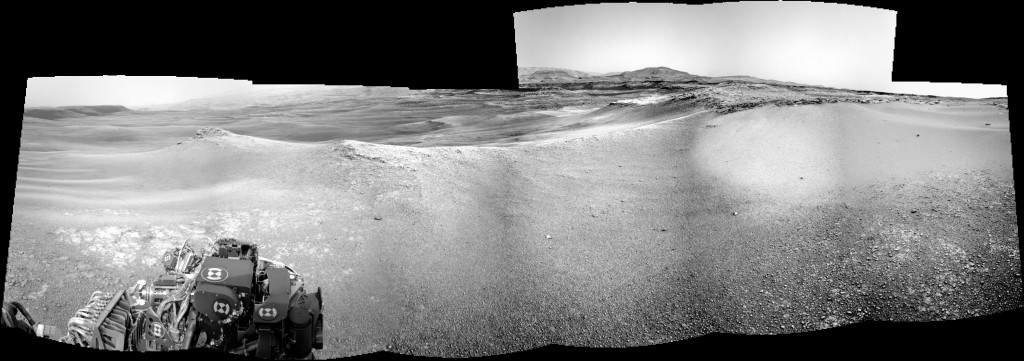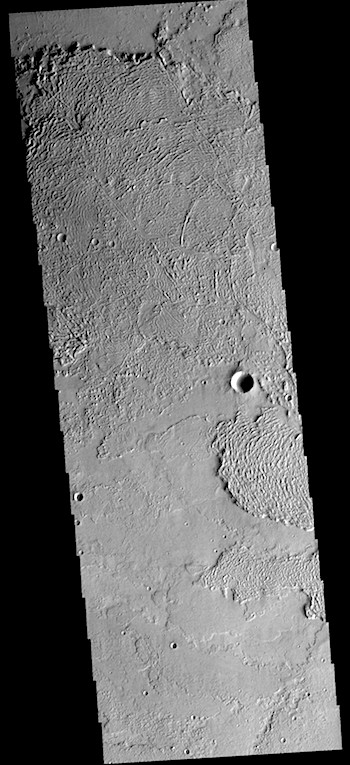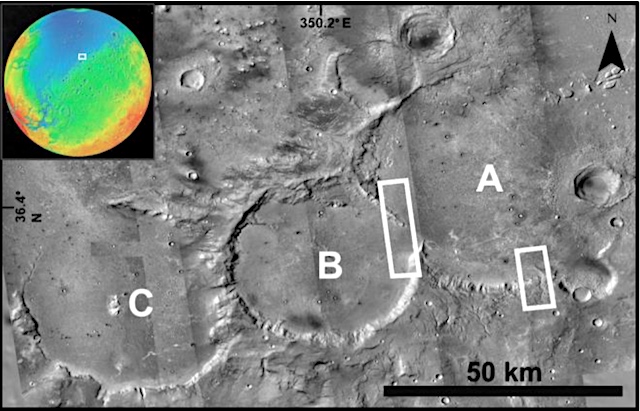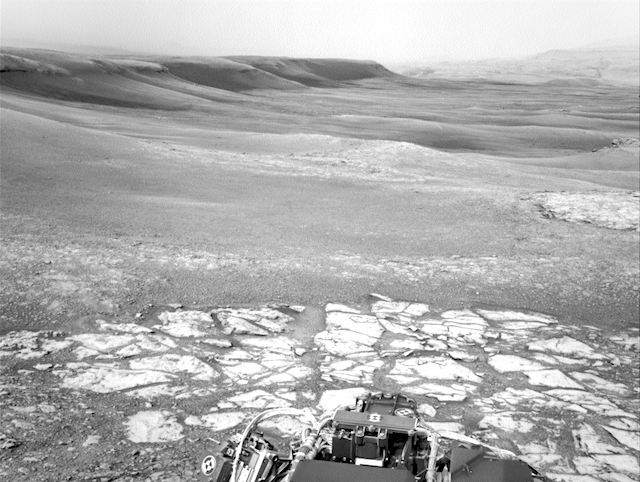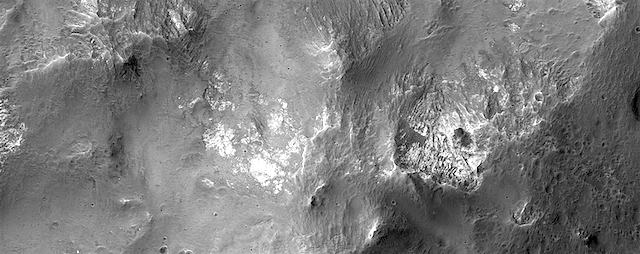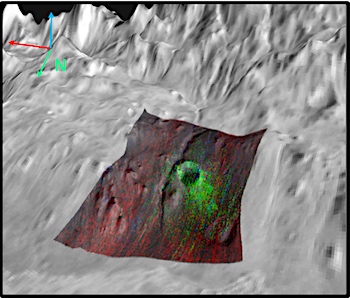 CRISM scene FRT0000B5A3 covers the southern wall of Gale crater, 15 km downslope from the rim. This region is gently sloping, compared to the northern wall, potentially indicating that the Gale basement rocks in the crater rim are mantled by newer material. A fluvial channel also bisects this scene. Fe/Mg phyllosilicates (green) have been exhumed by the central impact crater in this scene. This morphological feature along with the material inside the smaller crater toward the northwest are correlated to mass wasting events in this region of Gale Crater. The Mars Science Laboratory (MSL) Curiosity Rover is investigating the layered materials that make up the large mountain in the middle of Gale Crater. [More at link]
CRISM scene FRT0000B5A3 covers the southern wall of Gale crater, 15 km downslope from the rim. This region is gently sloping, compared to the northern wall, potentially indicating that the Gale basement rocks in the crater rim are mantled by newer material. A fluvial channel also bisects this scene. Fe/Mg phyllosilicates (green) have been exhumed by the central impact crater in this scene. This morphological feature along with the material inside the smaller crater toward the northwest are correlated to mass wasting events in this region of Gale Crater. The Mars Science Laboratory (MSL) Curiosity Rover is investigating the layered materials that make up the large mountain in the middle of Gale Crater. [More at link]
-
Recent Posts
Archives
Links
general
mission instruments
- CRISM: Compact Reconnaissance Imaging Spectrometer for Mars
- CTX: Context Camera
- HiRISE: High Resolution Imaging Science Experiment
- MARSIS: Mars Advanced Radar for Subsurface and Ionosphere Sounding
- SHARAD: Shallow Radar
- THEMIS: Thermal Emission Imaging System
missions
- All Mars missions list
- Curiosity rover
- ExoMars
- Hope (al-Amal) orbiter
- InSight
- Mars Atmosphere and Volatile Evolution Mission (MAVEN)
- Mars Exploration Rovers (MER)
- Mars Express (MEX)
- Mars Odyssey
- Mars Orbiter Mission (MOM) / Mangalyaan
- Mars Reconnaissance Orbiter (MRO)
- Mars Science Laboratory (MSL)
- Perseverance Rover
- Tianwen-1 orbiter/rover
news









